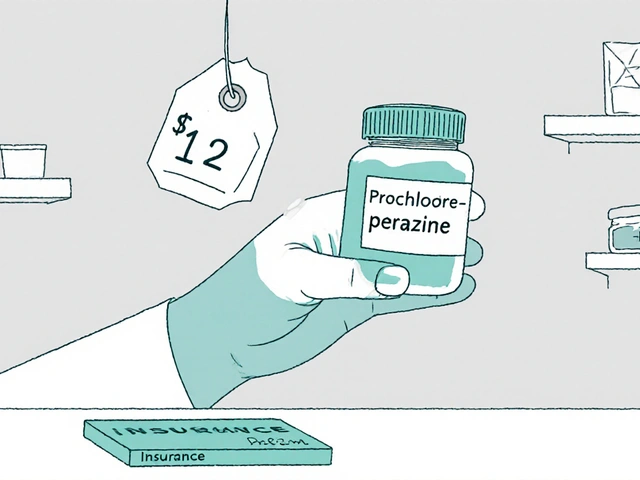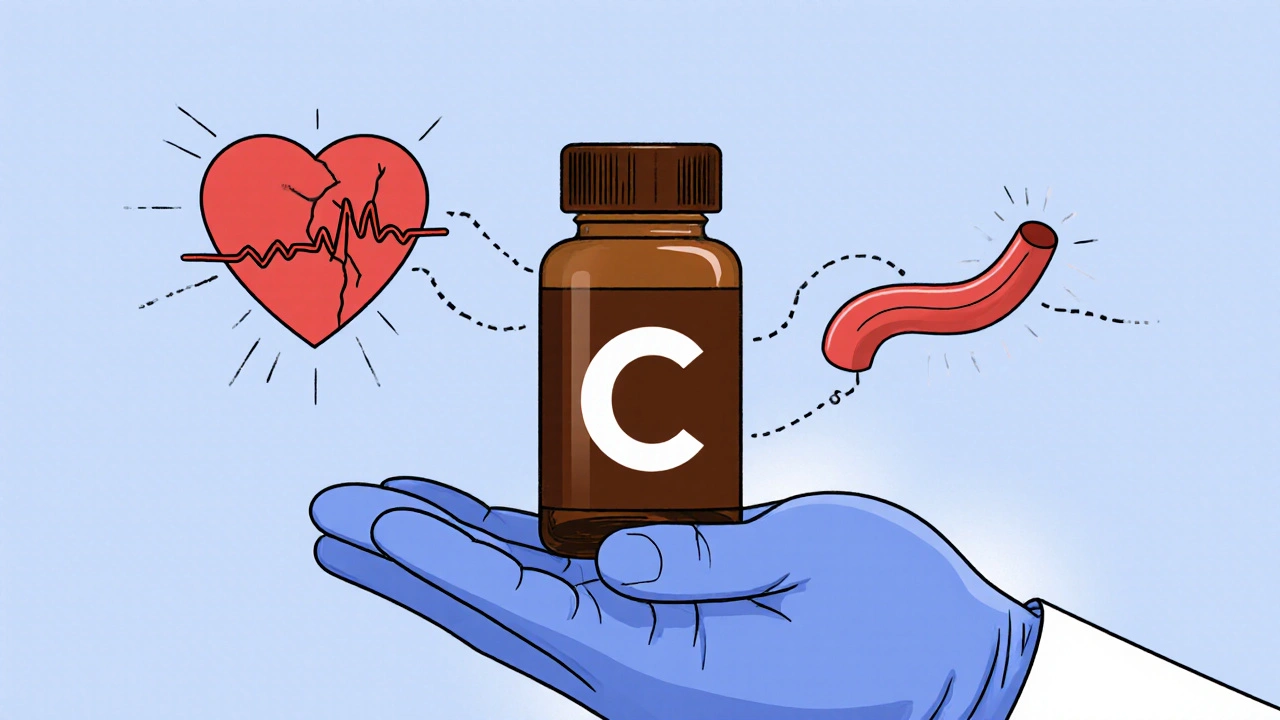When treating early Parkinson's disease, Azilect is a brand name for rasagiline, an irreversible monoamine oxidase‑B (MAO‑B) inhibitor that helps preserve dopamine levels in the brain. Rasagiline is taken once daily at 1mg and is approved for both monotherapy and adjunct therapy with levodopa. Patients often wonder how it stacks up against other options such as selegiline, safinamide, or the more traditional carbidopa/levodopa. Below we break down the key differences, so you can decide which route fits your lifestyle and symptom profile.
How MAO‑B inhibitors work in Parkinson’s disease
MAO‑B inhibitors block the enzyme that breaks down dopamine, extending the neurotransmitter’s action. By doing so, they can modestly improve motor symptoms and may slow disease progression when started early. The two most common MAO‑B inhibitors are rasagiline and selegiline; safinamide is a newer, reversible option with additional glutamate‑modulating effects.
Rasagiline versus selegiline: efficacy and tolerability
Both drugs belong to the same class, but clinical trials have shown subtle differences. In the ADAGIO study, rasagiline 1mg produced a statistically significant delay in the need for additional therapy compared with placebo. Selegiline, usually dosed at 10mg twice daily, also delays levodopa initiation, yet its higher dose can cause more nausea and orthostatic hypotension.
Rasagiline’s once‑daily 1mg tablet simplifies adherence, while selegiline’s extended‑release formulation still requires twice‑daily intake for optimal plasma levels. For patients sensitive to blood‑pressure changes, rasagiline generally carries a lower risk of hypotension.
Safinamide: the hybrid MAO‑B inhibitor
Safinamide combines reversible MAO‑B inhibition with inhibition of excessive glutamate release, a factor linked to dyskinesias. The drug is approved as an add‑on to levodopa at 50mg or 100mg daily. Compared with rasagiline, safinamide shows a slightly larger reduction in “off” time, but the difference is modest and may not justify the higher cost for every patient.
In terms of side‑effects, safinamide shares the insomnia risk seen with many dopamine‑enhancing agents, but it rarely triggers the vivid dreams sometimes reported with selegiline.
When to choose carbidopa/levodopa
Levodopa remains the most potent symptom‑reliever for Parkinson’s disease, especially in later stages. Carbidopa is added to prevent peripheral conversion of levodopa, reducing nausea. While levodopa offers the greatest motor benefit, long‑term use can lead to motor fluctuations and dyskinesias.
For patients with mild symptoms who want to postpone levodopa’s side‑effects, starting with an MAO‑B inhibitor like rasagiline makes sense. Once symptoms become more disabling, levodopa typically takes over as the cornerstone therapy.

Regulatory and guideline perspective (2024‑2025)
Both the U.S. Food and Drug Administration (FDA) and the United Kingdom’s National Institute for Health and Care Excellence (NICE) list rasagiline, selegiline, and safinamide as approved options for early Parkinson’s disease. NICE guidance (NG256, 2024 update) recommends rasagiline as a first‑line oral monotherapy for patients with mild motor signs who are not yet on levodopa, citing its favorable safety profile and once‑daily dosing.
Insurance formularies in the United Kingdom and United States generally place rasagiline in Tier2, making it more affordable than safinamide, which often lands in Tier3 with higher copays.
Cost comparison (2025 US & UK pricing)
| Drug | US MSRP (USD) | UK NHS List Price (GBP) | Typical Insurance Tier | Key Advantage |
|---|---|---|---|---|
| Azilect (Rasagiline) 1mg | $140 | £120 | Tier2 | Once‑daily, low hypotension risk |
| Selegiline 10mg (ER) | $115 | £105 | Tier2 | Long‑track record, cheap generic |
| Safinamide 50mg | $190 | £170 | Tier3 | Reduces ‘off’ time, glutamate modulation |
| Carbidopa/Levodopa (standard dose) | $80 | £70 | Tier1 | Highest motor benefit |
Practical checklist for choosing a therapy
- Are your symptoms mild enough for monotherapy? If yes, consider an MAO‑B inhibitor.
- Do you need once‑daily dosing? Rasagiline wins on convenience.
- Is blood‑pressure stability a concern? Rasagiline has a lower hypotension profile than selegiline.
- Are you prone to dyskinesias? Safinamide’s glutamate effect may help, but cost is higher.
- Has levodopa already been started? Adjustments to dose may be needed when adding any MAO‑B inhibitor.
Potential drug interactions and safety tips
All MAO‑B inhibitors can interact with certain antidepressants, especially selective serotonin reuptake inhibitors (SSRIs) and tricyclics. A washout period of at least 14days between starting rasagiline and a reversible MAO‑A inhibitor is recommended. Avoid over‑the‑counter decongestants containing pseudoephedrine, as they can raise blood pressure when combined with MAO‑B blockers.
Patients with a history of severe liver disease should use caution with rasagiline, as the drug is metabolized hepatically. Routine liver‑function tests are advised before initiation and periodically thereafter.
Real‑world patient experiences
Laura, a 62‑year‑old from Manchester, started rasagiline soon after her diagnosis. She says the single‑tablet routine “fits my morning coffee habit” and she hasn’t felt the dizziness that some friends reported with selegiline. In contrast, Mark from Leeds tried selegiline but switched to safinamide because he experienced “day‑time sleepiness” that affected his gardening.
These anecdotes echo clinical data: adherence improves when dosing is simple, while side‑effect profiles drive individual preferences.
Bottom line for clinicians and patients
If you need a first‑line oral drug for early Parkinson’s disease, rasagiline offers a blend of efficacy, safety, and convenience that often outweighs the marginal benefits of alternatives. Selegiline remains a cost‑effective option for patients who can tolerate twice‑daily dosing. Safinamide is worth considering when “off” time remains problematic despite optimized levodopa, but the price tag and insurance hurdles can be limiting.
Ultimately, the choice should balance symptom control, side‑effect tolerance, dosing preference, and budget. Discuss these factors with your neurologist to arrive at a personalized plan.
Frequently Asked Questions
Can I take rasagiline with levodopa?
Yes. Rasagiline is approved as an adjunct to levodopa and can help smooth out motor fluctuations. Start at the recommended 1mg dose and monitor for any increase in dyskinesias.
Is rasagiline safer than selegiline for blood pressure?
Clinical trials suggest rasagiline carries a lower risk of orthostatic hypotension, especially at the 1mg daily dose. Selegiline’s higher dose can cause more pronounced blood‑pressure drops.
Do MAO‑B inhibitors affect dietary tyramine?
Rasagiline and safinamide have minimal tyramine interaction, so strict dietary restrictions are no longer required. Older MAO‑A inhibitors still need caution.
How long does it take to see benefits from rasagiline?
Patients often notice a modest improvement in motor scores within 4-6weeks, with maximal benefit around 12weeks. Longer‑term studies show a delay in need for additional therapy.
Can I switch from selegiline to rasagiline?
A direct switch is allowed because both are MAO‑B inhibitors, but the clinician should taper selegiline to avoid overlapping inhibition. A 2‑week washout is often recommended.





Comments
8 Comments
Neviah Abrahams
So you think rasg is just another pill? The data shows it actually delays extra meds and that matters for quality of life! Most patients overlook the low hypotension risk and pay extra for flashes.
Uju Okonkwo
Absolutely, the once‑daily schedule can be a game changer for people juggling appointments and family. If someone’s blood pressure is a concern, rasagiline’s profile is definitely worth a closer look. It also sidesteps the dietary tyramine worries that older MAO‑A inhibitors imposed. Keep the conversation going, more folks will benefit from this nuance.
allen doroteo
i dont buy the hype around rasagiline its just another brand name. selegiline has been around longer and cheaper. the side effects are similar so why pay more?
Corey Jost
Rasagiline often gets a gold star in guidelines, yet the underlying evidence is not as bulletproof as it appears. The ADAGIO trial, while statistically significant, relied on surrogate endpoints, and those seldom translate into day‑to‑day freedom. Moreover, the once‑daily convenience can mask the fact that the drug doesn't halt neuro‑degeneration; it merely patches dopamine loss temporarily. Patients still end up needing levodopa sooner or later. The cost differential, though modest, becomes a burden for long‑term users. Insurance tiers vary, and a Tier‑2 plan might still leave a hefty co‑pay. Compare that to generic selegiline, which sits comfortably in Tier‑2 with a lower sticker price. Safety‑wise, the lower hypotension risk is real but not exclusive to rasagiline; many clinicians manage blood pressure with simple dose adjustments regardless of the MAO‑B chosen. The newer safinamide brings glutamate modulation into the mix, offering a different mechanistic edge, while its price is higher, the reduction in off‑time can be clinically meaningful for certain patients. In practice, the choice often boils down to individual tolerance, lifestyle, and budget, so before jumping on the rasagiline bandwagon, weigh all these factors carefully.
Nick Ward
Hey there! I’ve found the single‑tablet routine especially helpful for folks with busy mornings 😊
Oliver Behr
Totally agree, simplicity often leads to better adherence.
Tiffany W
From a pharmacodynamic standpoint, rasagiline’s irreversible MAO‑B inhibition confers a superior selectivity index relative to reversible agents, thereby minimizing off‑target serotonergic interactions. This mechanistic advantage underpins its favorable safety profile, particularly concerning orthostatic hypotension. Nonetheless, clinicians must remain vigilant about potential drug‑drug interactions with serotonergic antidepressants.
Rajeshwar N.
While the clinical data are solid, I’d argue that real‑world adherence hinges more on patient education than on drug chemistry. If physicians emphasize the modest benefits without overselling, patients can make informed choices that align with their personal risk tolerance.
Write a comment